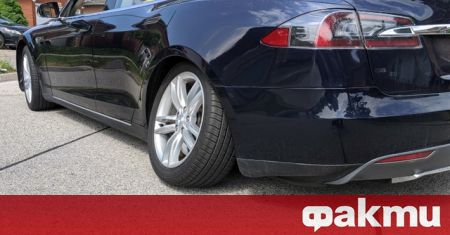As is well known in Europe, cars need to be inspected regularly to continue on public roads. TÜV is the largest inspection company in Germany, so much so that it has become almost synonymous with these technical inspections.
Each year, TÜV issues a review report. The latter also included the most widely used electric cars. In particular, these are four electric vehicles, two of which are below the industry average for disapproval – that is, with more defects, and two are above this average. Tesla Model S is the most defective electric car.
It turns out that used specimens of Tesla Model S have serious problems with many of the components and units, but mostly in the suspension. In addition to the Model S, the list also includes the BMW i3, Smart fortwo ED and Renault ZOE, all of which undergo their first inspection three years after purchase. Smart Fortwo turned out to have the fewest defects, with only 3.5% defective. If we compare this indicator with the 129 models with internal combustion engines, which are included in the TÜV Report 2022, the small electric car is among the 50 best.
The forthcoming retirement of the BMW i3 is sure to disappoint fans of electric cars, because the Bavarian city electric car also performs quite well in terms of defects. According to TÜV, they are 4.7%. Its most common problems are with low beams and brake discs.
In this case, it is not exactly a malfunction, but rather a lack of use that causes corrosion of the discs. According to Joachim Buhler, Managing Director of the TÜV Association, this should serve as a warning to owners of electric cars: they should apply more brakes and check them regularly.
Renault ZOE is the electric car that is below the average in terms of defects. With an average disapproval rate of 5.7%, it is among the 50 worst cars in the report. Most of the problems are related to “defective or incorrectly adjusted headlights” as well as problematic suspension. These are problems that the French electric car shares with the worst-performing Tesla Model S, but with the American electric car they are significantly more and more serious.
Tesla Model S received a 10.7% failure rate. This means that, according to TÜV, 1 in 10 cars has serious problems three years after leaving the factory. Compared to the 129 on the TÜV list, the Tesla is only better than the Dacia Logan and Dacia Duster. The main problems are related to fog lights, low beams and suspension.
The TÜV report confirms that Tesla urgently needs to take care of quality control and testing of its vehicles. In a few years’ time, the 3 and Y models will need to be tested in general, and the results could seriously damage Tesla’s reputation in Germany and Europe as a whole. Although there is still time to avoid this, the electric car maker has so far given no indication that it is even slightly concerned about its substandard production.
Here are the last 10 models with internal combustion engines in the rankings and their failure rates:
119. Citroen Berlingo – 8.8
120. Citroen C4 Cactus – 8.9
121. Ford Mondeo – 9.0
122. Ford S-Max – 9.9
123. Renault Kangoo – 9.9
124. Dacia Dokker – 10.0
125. Dacia Logan – 10.4
126. Ford Galaxy – 10.4
127. Fiat Punto – 10.5
128. Dacia Lodgy – 10.9
129. Dacia Duster – 11.1
Rate:
☆
☆
☆
☆
☆
–
Grade 3.1 from 16 voice.
–
– –


